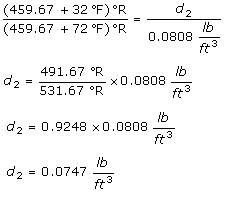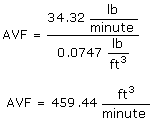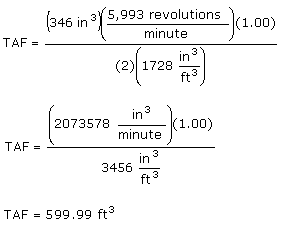
| September 1, 2000 |
Volumetric Efficiency
Calculating your cars volumetric
efficiency
Ever have one of those days where you accidentally stumble onto something that is actually worth thinking about? Maybe the idea is so good it is worth writing down and investigating. I was having one of those days while throwing a few emails back and forth with Tom Deskins. We were discussing flow rates and the upcoming flow tests Tom was having done to a few LS1 induction parts. I will be involved in the tests because I was able to provide a throttle body for Tom to use.
During the discussion, Tom mentioned that he could make a rough guess at what the engine's volumetric efficiency is by just using a scan tool to get the data. I thought that was an intriguing idea. This could tell us the volumetric efficiency of the car, and we wouldn't have to use the assumed 80% that you see tossed around so much. This "assumed" 80% does not give any sources or prove the volumetric efficiency rating of your car. At that point, I set out to find the "true" volumetric efficiency of my car.
What is volumetric efficiency
Volumetric efficiency is the measurement of how close the actual volumetric flow rate is to the theoretical volumetric flow rate. A engine has a set volume (displacement) that can be calculated. However, your engine will not use the full volume (100%) it has available because of friction losses, leaks, and the fact that a mass produced engine can only be so good before the money out weighs the benefits (the point of diminishing returns).
A grease-covered, wrench-turning monkey like yourself cannot have your car operating at less than par performance. So you "have" to go out and buy aftermarket induction parts, a set of ported heads, bigger lift cam, and a good exhaust system. It is all in the name of automotive science; at least that is how we explain our addictions to our better halves. All of these parts help to increase the volumetric efficiency of the engine and bumps up the power output of the car allowing you to edge ahead of your racing buddy.
Using a scan tool to get the necessary data
We use Auto Tap, a very popular scan tool which works on your notebook computer. You receive a software program and a cable which connects your notebook computer to your car. Three parameters must be logged before the appropriate data can be collected.
The first parameter is the engine speed, or revolutions per minute. The second parameter is the mass flow rate reported by the mass air flow sensor and the last parameter is the intake air temperature. This parameter is recorded in the air box lid on my 1999 Z28 Camaro.
There is one catch to recording correct and accurate data. You MUST have the STOCK mass air flow housing installed on your car when taking these readings. This means that even the screen must be installed on your housing. If you have a ported mass air flow housing or the screen has been removed, your mass flow readings will be inaccurate. The mass air flow sensors depend on laminar flow (from the screen) and the cross section of the mass air flow housing.
We simply went out on a stretch of straight road in the middle of nowhere and stretched the car's legs a little bit. :-) Having those three parameters entered allowed us to move on to the next step in our quest for knowledge. Here is a sample from the Auto Tap log file of the data parameters we logged.
Engine speed - 5,993 rpm
Mass air flow rate - 34.32 lb/min
Intake air temperature - 70 °F
Air density
One of the first problems that I encountered when trying to calculate the volumetric efficiency of my engine was converting mass flow to volumetric flow. Given a mass flow rate for air, you must have the density of the air to find the volumetric flow rate. Density is inversely proportional to temperature and can be readily calculated at any temperature. The density of air at 32 °F and 1 atmosphere is 0.0808 lb/ft3. Knowing the density of air at a given temperature, you can use a ratio (see Equation 1) to determine the density for the incoming air temperature.
Degrees Fahrenheit (°F) will not work correctly using this method. Degrees Fahrenheit must be converted to absolute temperature, degrees Rankine (°R). When converting Fahrenheit to Rankine, add 459.67 to the Fahrenheit measurement to get absolute temperature (°R).
The temperature of the air that you use to calculate the density is always one for debate. I used the temperature recorded by the car's intake air temperature sensor. It is safe to assume that the air will heat up even further by the time it enters the intake manifold. That makes our equation a tad bit conservative but close enough for our intentions. Others may use the ambient temperature (temperature of the environment). I think it is still best to use the temperature that the car's computer (PCM) recognizes from the intake air temperature sensor.
Equation 1

Where:
t1 = Temperature of air
for a known density (32 °F @ 0.0808 lb/ft3)
t2 = Temperature of the intake air measured by the intake air temperature
sensor (°R)
d1 = Density of air for a known temperature (0.0808 lb/ft3
@ 32 °F)
d2 = Density of the intake air (lb/ft3)
Solving for d2:

Calculating your car's volumetric flow rate
Now you are ready to calculate your car's actual volumetric flow rate. Multiply the mass flow rate (MFK) from the Auto Tap log file, by the density of the intake air (d2) at that specific mass flow rate. This gives you the actual volumetric flow rate of your engine. This is illustrated by Equation 2 where the actual air flow by our engine at 5,993 rpm is calculated.
Equation 2

Where:
AVF = Actual volumetric flow
rate (ft3/minute)
MFK = Mass flow rate
taken from Auto Tap log (lb/minute)
d2 = Density of air for the intake air (lb/ft3)
Solving for d2:

Calculating theoretical air flow for your engine
Knowing the theoretical air flow in cubic-feet per minute (cfm) your car can take in at a given engine speed (rpm) is an absolute must in determining volumetric efficiency. In order to figure out what the theoretical amount of air your engine will "ingest" at a certain rpm, you will have to answer a few questions. What is the displacement of your engine? For what maximum rpm do you want to design? Do you have a four- or two-stroke engine?
Since we own 1999 Camaro Z28, we will use the LS1 with no internal engine modifications as our design engine. Our LS1 has a displacement rating of 346 cubic inches (in3). We will calculate the theoretical air flow at 5,993 rpm because we have the Auto Tap data at that rpm. Our engine is a four stroke engine like all pushrod V-8's on the road. Having a four-stroke engine is represented by a value of two. This equation will show how much air is needed when the engine operates at 100% efficiency at 5,993 rpm. Equation 32 is for electronic fuel injected cars only
Equation 3
![]()
Where:
rpm
= maximum design rpm
TAF = Theoretical air flow (ft3/minute)
VE
= Volumetric efficiency (100% theoretical)
ED = Engine displacement (in3)
ES
= Engine stroke (2 for a four stroke engine)
C
= Conversion factor from in3 to ft3
Solving for TAF:

Calculating volumetric efficiency
The volumetric efficiency is simply the actual volumetric flow rate divided by the theoretical volumetric flow rate multiplied by one hundred. Equation 4 shows the volumetric efficiency using the data from the previous two equations. This will tell us the volumetric efficiency of our car at 5,993 rpm.
Equation 4

Where:
VE = Volumetric Efficiency (%)
AVF = Actual volumetric flow rate (ft3/minute)
TAF = Theoretical air flow rate (ft3/minute)
Solving for VE:

The results you get from your calculations should help you better understand how your car will react with future modifications. Be sure to establish a baseline and test your car after every modification. Although the values we have calculated are not exact and a little on the conservative side; they are close enough for us weekend wrench-turners.
- Eric Barger
Editors: Tom Deskins & Kelly Barger
![]()
Works Cited
1. Deskins, Tom. Interview.
2. Vizard, David. How to Build Horsepower. Volume 2. Page 60.
3. Green, Don, and Robert H. Perry. Perry's Chemical Engineers' Handbook. 6th edition. New York: McGraw-Hill, 1984.
Web Author: Eric Barger help@installuniversity.com
Copyright © 1999 - 2002 Eric Barger. All rights reserved.
Revised: June 07, 2007.